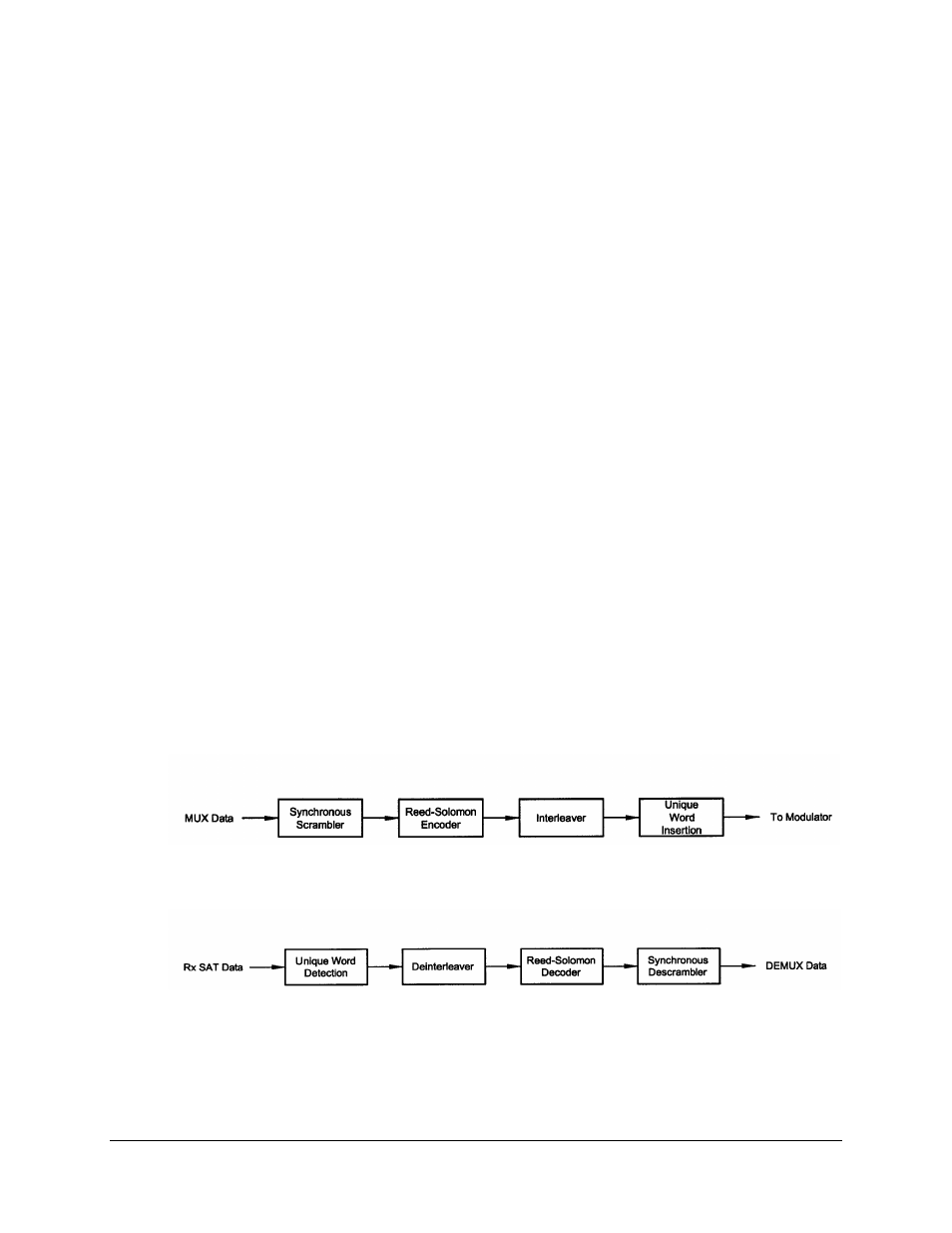2 reed-solomon code rate, 3 interleaving – Comtech EF Data DMD-2050E User Manual
Page 99

DMD2050E Universal Satellite Modem
Theory of Operation
MN-DMD2050E Revision 2
3–57
When the signal is received and demodulated by the Receiving Modem, it is fed to a Viterbi
Decoder for the first layer of error correction. After error correction is performed by the Viterbi
Decoder, the unique words are located and the data is deinterleaved and reformed into blocks.
The R-S Decoder then corrects the leftover errors in each block. The data is then descrambled
and output from the R-S Section.
3.13.2 Reed-Solomon Code Rate
The R-S Code Rate is defined by (N, K) where N is the total R-S block size in bytes - data +
check bytes - and K is the number of data bytes input into the R-S Encoder. The transmission
rate expansion required by the R-S Codec is then defined by N/K. The DMD2050E automatically
sets the correct R-S code rate for IDR/IBS open network operation in accordance with the data
shown in Table 3-4. In Closed Net Mode, the DMD2050E allows the following N and K setting:
(126, 112), (219, 201), (194, 178), (225, 205).Variable Reed-Solomon rates are available on the
optional AS/5167 Super Card. Refer to Appendix A for further information.
3.13.3 Interleaving
The DMD2050E allows for interleaving depths of 4 or 8 R-S Blocks. This allows burst errors to be
spread over 4 or 8 R-S blocks in order to enhance the error correcting performance of the R-S
Codec. For Intelsat Network Modes, the DMD2050E automatically sets the interleaving depth to
4 for QPSK or BPSK, or 8 for 8PSK. In Closed Network Mode, the interleaver depth can be
manually set to 4 or 8, and in DVB Network Mode, the DMD2050E automatically sets the
interleaver depth to 12.
Figure 3-20. Reed-Solomon Encoder Functional Block Diagram
Figure 3-21. Reed-Solomon Decoder Functional Block Diagram